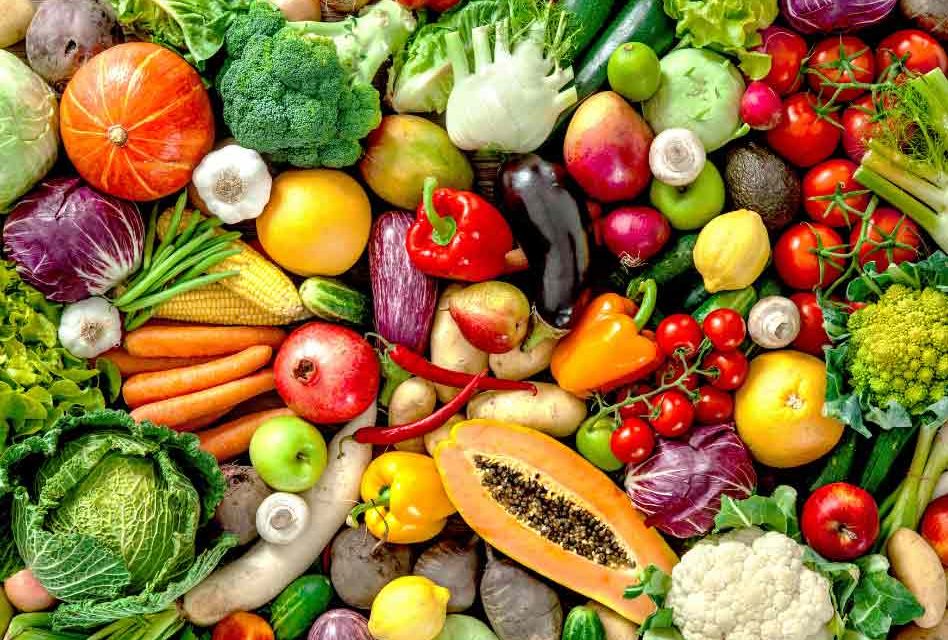
Melissa Perry, RD
Registered Dietitian
Orlando Health
We all know that fruits and vegetables, which guard against cardiovascular disease, cancer and other health issues, should be a staple of our diets. But most Americans struggle to eat the recommended five servings a day.
According to a CDC survey, only 18 percent of adults hit that daily target.
The benefits of eating fruits and vegetables is undeniable. People who eat five servings daily have 13 percent lower risk of dying from any cause compared with people who eat two servings daily.
Eating all the colors of the rainbow ensures that you’re filling your body with all the vitamins it needs for optimal health.
How to Get Your 5 a Day
Aim for two fruits and three vegetables a day. Here’s what’s considered a serving of some of the most common fruits and vegetables:
One serving of fruit equals:
- One medium apple, pear, orange, peach or nectarine
- Half a medium avocado
- 1 small banana
- Half a medium grapefruit
- 16 grapes
- 1 medium kiwi
- Half a medium mango
- Quarter of a medium pineapple
- 4 large strawberries
One serving of vegetables equals:
- Half a large bell pepper
- 5 to 8 broccoli florets
- 6 baby carrots or one whole medium carrot
- 1 cup raw or ½ cup cooked leafy greens
- Half a small yellow squash
- Half a large zucchini
- ½ cup cooked green beans
- ½ cup mushrooms
Many vegetables have less calories and sugar content than fruit, which is why you should try to eat more vegetables than fruit. Fresh, frozen or canned vegetables count, but choose low-sodium canned vegetables and rinse them if possible before adding them to foods.
Not All Fruits and Vegetables Are Created Equal
Some fruits and vegetables are not as nutrient-dense as others.
Keep in mind that peas, corn, and potatoes are starchy vegetables and contain a higher glycemic index. These vegetables can also raise your blood sugar levels, so make sure to monitor your portion size. Instead, focus on including more nonstarchy vegetables to count toward your “five a day.”
Fruit juices can be deceiving because, while they contain fruit, it’s highly processed and can be full of added sugars. Instead, opt for whole fruits or even a smoothie that contains high fiber content without added sugars.
Eat the Rainbow
The color of your food determines its nutrients.
- Red foods like tomatoes, strawberries, cherries, and red bell peppers are full of lycopene and anthocyanins, which do everything from fighting heart disease and prostate cancer to decrease the risk for stroke and macular degeneration in the elderly.
- Green vegetables are rich in vital chemicals such as sulforaphane, which is linked to digestion and other health benefits.
- Orange and yellow fruits and vegetables are linked to antioxidants that convert into vitamin A, which promotes healthy skin and teeth. Vitamin A can be found in sweet potatoes, carrots, squash, and pumpkin.
- Purple foods, like blueberries, figs, and blackberries, provide protection against inflammation and may support healthy blood pressure.
- White foods like leeks, parsnips, and mushrooms increase the body’s ability to fight infections.
Vital Nutrients for Health
Fruits and vegetables are also essential for providing some of the nutrients that aid in continuing and improving our body’s processes. Getting enough of these nutrients is key to maintaining optimal health.
Fiber is essential to maintaining digestive and overall health. Insoluble fiber absorbs water to soften your stool and move it smoothly through the digestive tract. Soluble fiber forms a gel-like substance that slows the absorption of blood sugar.
Fruits and vegetables that are a significant source of fiber include:
- Lentils
- Beans
- Avocado
- Berries (especially blackberries)
- Potassium is necessary for the normal functioning of all cells. It regulates the heartbeat, ensures proper function of the muscles and nerves, and is vital for synthesizing protein and metabolizing carbohydrates.
Fruits and vegetables that are a significant source of potassium include:
- Potatoes
- Avocado
- Bananas
- Oranges
- Cantaloupe
- Vitamin D, which can be produced through sun exposure or foods and supplements, promotes healthy bones. Mushrooms and fortified orange juice (without added sugar) are both a significant source of vitamin D.
Iron helps with energy, focus, the regulation of body temperature, and general growth and development. Significant sources of iron include chickpeas, spinach and white beans.
Vitamin C can help manage your high blood pressure, boosts immunity, and lowers the risk of heart disease. Citrus and leafy greens are a significant source of vitamin C.
What If You Have a Vitamin or Mineral Deficiency?
If you have a vitamin or mineral deficiency, it means you’re not getting enough of a nutrient. When you eat a wide variety of fruits and vegetables, which are naturally packed with nutrients, you have a better chance of keeping your body healthy and improving any vitamin or mineral deficiencies.
Talk to your doctor about setting reasonable, manageable goals to increase your intake of fruits and vegetables.

















